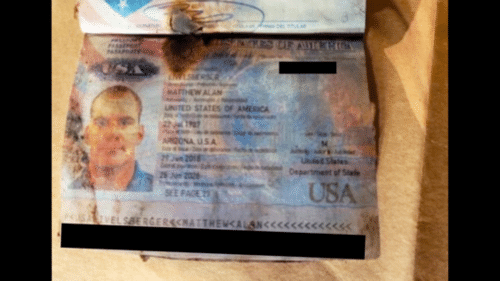Gravitic Propulsion Drones To China 'Attack': What Matthew Livelsberger's Alleged 'Manifesto' Says

Intelligence officer Sam Shoemate has claimed in an appearance on former US Navy Seal Shawn Ryan's podcast, 'Shawn Ryan Show,' that the suspect in the Cybertruck attack in Las Vegas, Matthew Livelsberger, wrote an email to him revealing several sensitive security information.The email makes explosive claims about the recent drone sightings on the East Coast and discusses military technologies and covert operations of the US Army. Notably, Livelsberger was an active-duty officer at the time of the Cybertruck blast and died inside the vehicle as it was engulfed in flames.
Here are the key claims made in the email, allegedly sent by Livelsberger.
Gravitic Propulsion Systems: Both China and the US possess this technology, allowing high-speed unmanned aircraft with unlimited payload capacity to operate with stealth. Recently, China launched an aircraft from submarines along the US East Coast, similar to intelligence-gathering balloons. These aircraft, the email claimed, are considered a significant national security threat due to their advanced capabilities, including the ability to target strategic sites like the White House, potentially leading to a "checkmate" situation.Also read:
China’s Strategic Intent: The email claims China is preparing for potential East Coast attacks, leveraging these technologies.
Personal Surveillance: In the alleged email, Livelsberger claims that he is under surveillance by Homeland Security or the FBI, blocked from entering Mexico. He claimed that he was being tracked both digitally and physically due to their knowledge of classified programs.
Revealed Military Actions: Livelsberger also claimed in the alleged email that he was involved in the controversial 2019 airstrikes in Nimruz, Afghanistan, resulting in civilian casualties and violations of the Geneva Convention. They mention working with top US military officials, including General Austin S. Miller.
Verification Details: The LinkedIn profile and security credentials (TSSCI with UAP access) were also provided to authenticate the claims made in the email.
